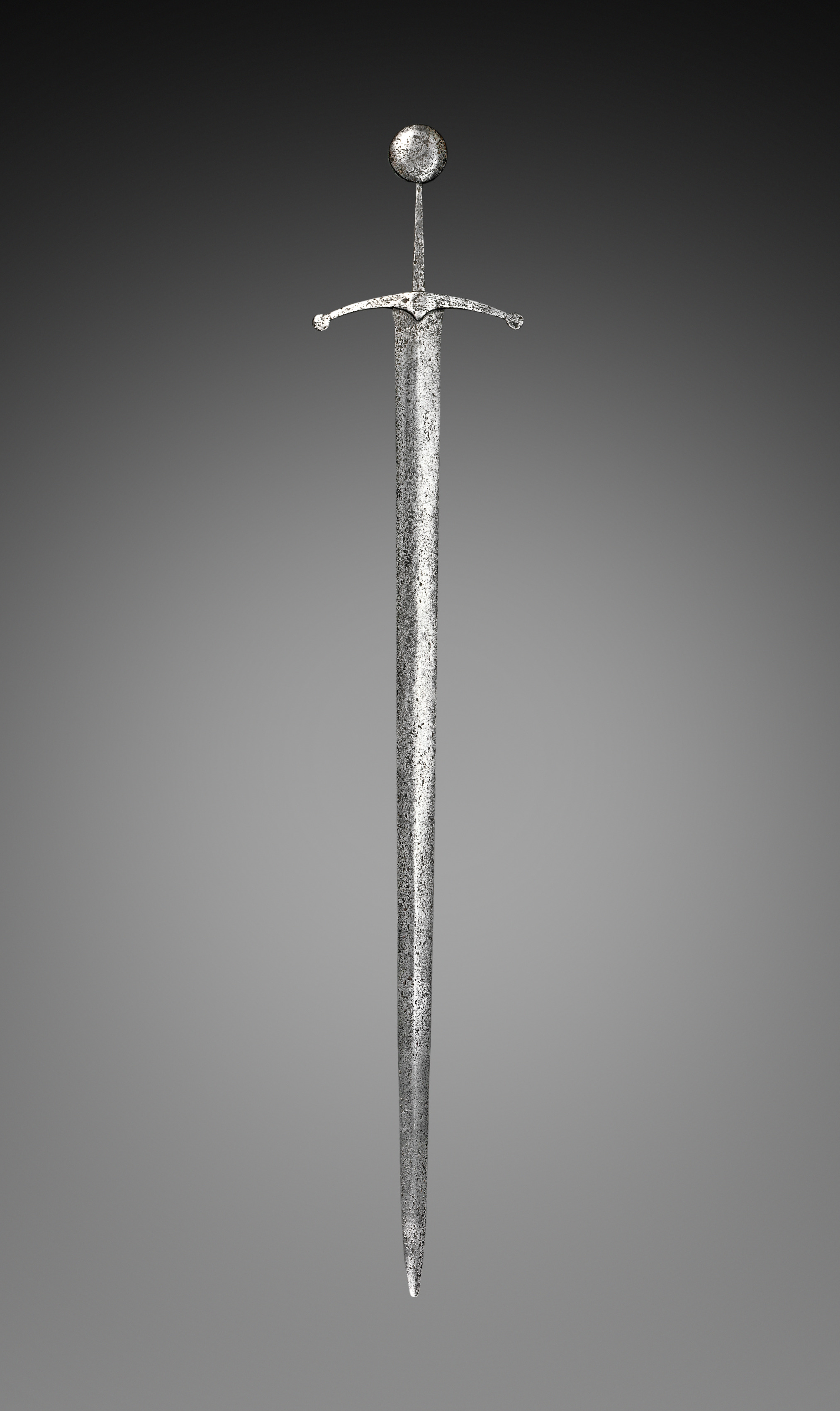The Cleveland Museum of Art
Collection Online as of April 20, 2024

Sword
1400s
(unassigned)
Overall: 103.5 cm (40 3/4 in.); Quillions: 19.1 cm (7 1/2 in.)
Location: 210A Armor Court
Did You Know?
Although now lost, this sword would have had a scabbard or sheath made of wood covered in leather to protect it from water so it wouldn't rust when not in use.Description
The European sword is derived from the ninth-century Viking sword, which consisted of a straight double-edged blade and was suitable for slashing or thrusting. Throughout the medieval period swords became increasingly specialized weapons depending on whether it was intended to be used on horseback or on foot. A knight likely owned several swords according to his needs and preferences. Craftsman sought to achieve the technical superiority that in turn would provide his client with a distinct advantage.- ?-1919Frank Gair Macomber (1849-1941) Boston, MA1919(Sale: American Art Association, New York, NY, Theodore Offerman sale February 7-8, 1919), lot 427)1919-The Cleveland Museum of Art, Cleveland, OH
- American Art Association. Ancient Arms and Weapons and Accoutrements. 1919. lot 427Gilchrist, Helen Ives. A Catalogue of the Collection of Arms & Armor Presented to the Cleveland Museum of Art by Mr. and Mrs. John Long Severance; 1916-1923. Cleveland: The Cleveland Museum of Art, 1924. Mentioned: p. 88, E9 archive.orgFliegel, Stephen N. Arms and Armor: The Cleveland Museum of Art. [Cleveland, Ohio]: The Museum, 1998. p. 110, 172, cat. no. 192Fliegel, Stephen N. Arms & Armor: The Cleveland Museum of Art. [Cleveland, Ohio]: Cleveland Museum of Art, 2007. cat. no. 128, p. 188
- Armor Court Reinstallation. The Cleveland Museum of Art (organizer).Gothic Art 1360-1440. The Cleveland Museum of Art, Cleveland, OH (organizer) (August 6-September 15, 1963).
- {{cite web|title=Sword|url=false|author=|year=1400s|access-date=20 April 2024|publisher=Cleveland Museum of Art}}
Source URL:
https://www.clevelandart.org/art/1919.69